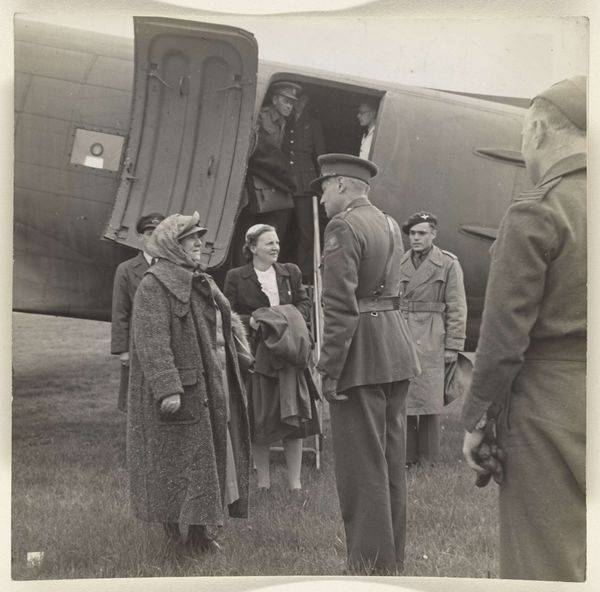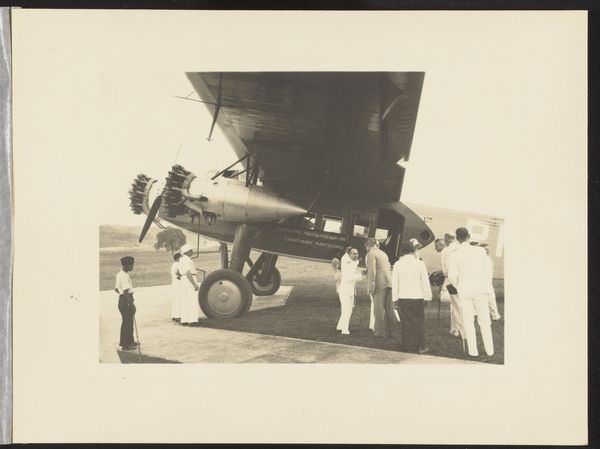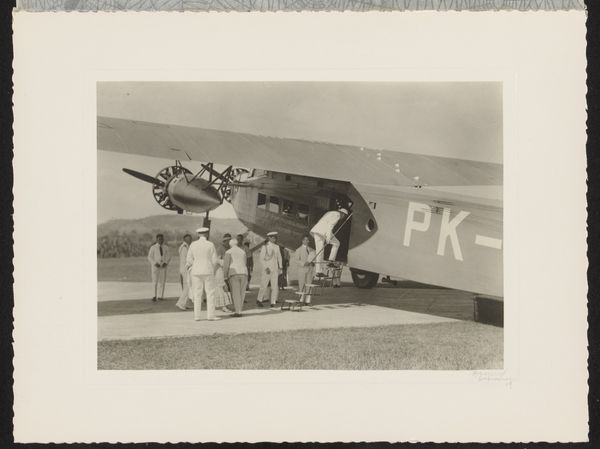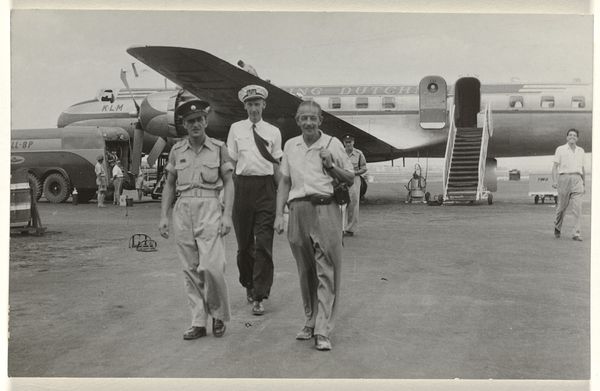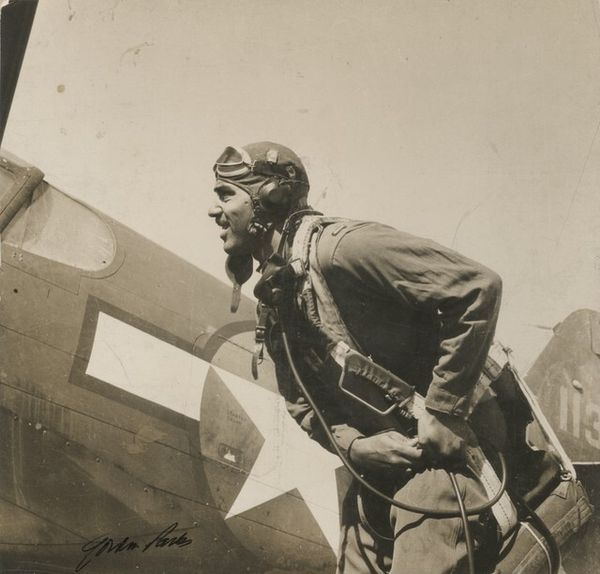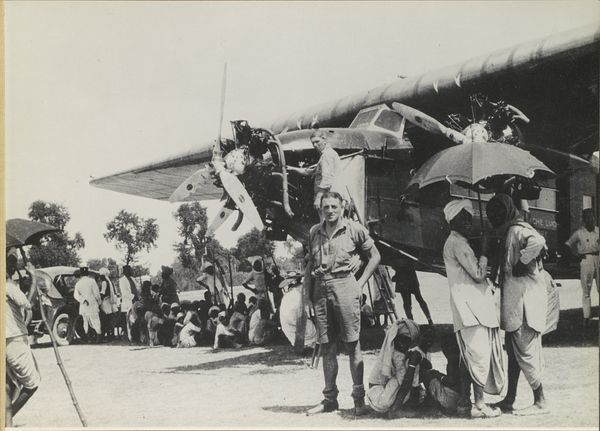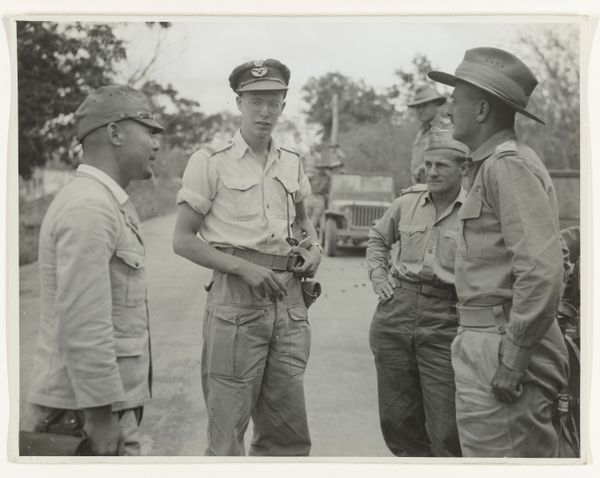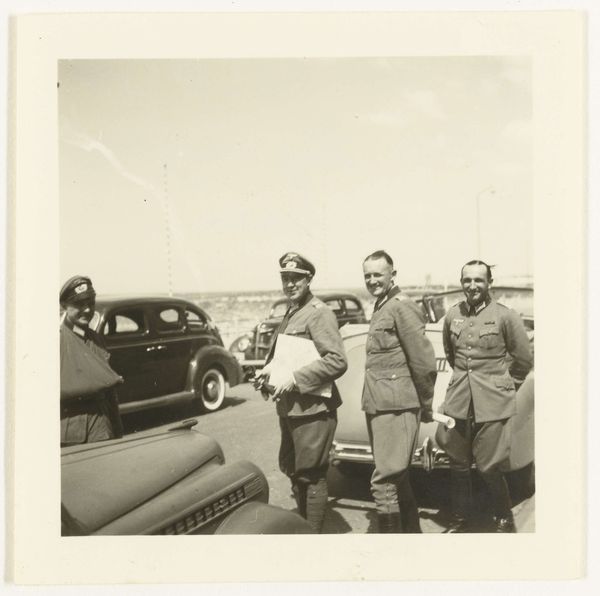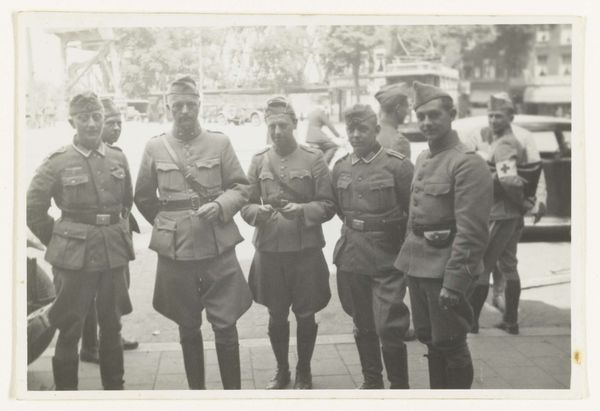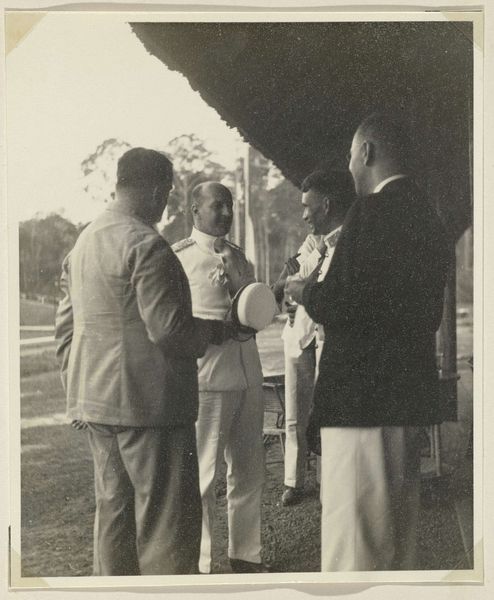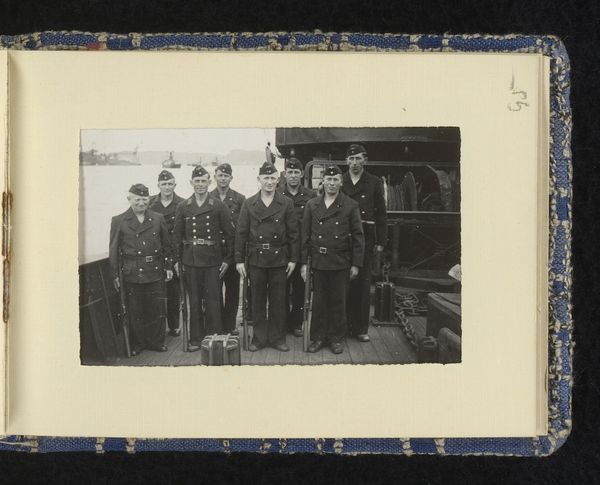
Seyss-Inquart als gevangene van het Canadese leger Possibly 1945 - 1946
0:00
0:00
photography, gelatin-silver-print
#
portrait
#
print photography
#
outdoor photograph
#
outdoor photo
#
archive photography
#
photography
#
historical photography
#
gelatin-silver-print
#
history-painting
#
modernism
Dimensions: width 17 cm, height 21 cm
Copyright: Rijks Museum: Open Domain
Editor: This gelatin-silver print, likely taken between 1945 and 1946, is titled "Seyss-Inquart als gevangene van het Canadese leger"—Seyss-Inquart as a prisoner of the Canadian Army. The composition is striking; a high-ranking Nazi official, surrounded by his Canadian captors and leaning on a cane. What social dynamics do you see at play here? Curator: The power dynamics in this photograph are highly constructed, wouldn’t you agree? This isn't just a snapshot; it's a carefully staged presentation of justice and the victor’s narrative. Seyss-Inquart, formerly a powerful figure in the Nazi regime, is shown here diminished and dependent, literally supported by a cane. Editor: So it's a performance of power? The Canadians aren't just holding him, they're displaying him. Curator: Exactly! Consider where this image would have circulated. It would've served as visual propaganda, reassuring the public that justice was being served, reinforcing the Allies’ moral high ground. Think about how museums contribute to this. Editor: Museums as a place of power perpetuating cultural narratives, almost celebrating this downfall... What is the plane doing in the background of the image? Curator: Indeed! And the aircraft adds another layer. It might suggest the reach and technological superiority of the Allied forces. The fact that this photo is in the Rijksmuseum today raises further questions. How does the context of a museum shape our understanding of this image now? What’s its role in remembering or forgetting this period of history? Editor: So it's not just about the image itself, but also how its meaning shifts based on who is viewing it and where? Curator: Precisely. By thinking about its distribution and how it's framed in institutions like museums, we gain insight into the ongoing politics of imagery and historical memory. Editor: It’s sobering to think about how a photograph, seemingly documenting a simple event, is actually participating in larger conversations of power, justice, and memory. Thanks for shedding light on that! Curator: My pleasure! Considering these images critically reminds us of the museum's role in constructing history.
Comments
No comments
Be the first to comment and join the conversation on the ultimate creative platform.
